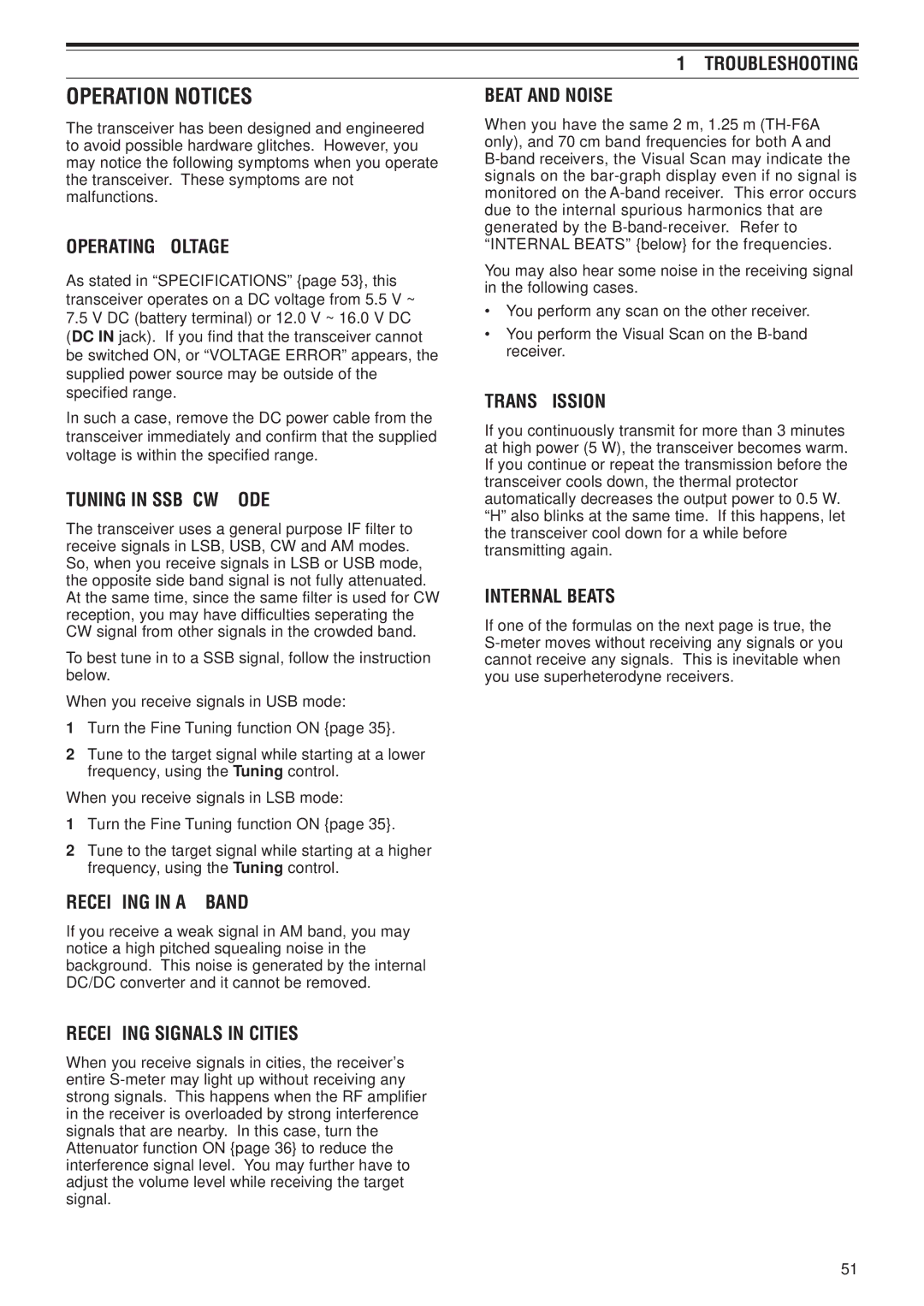15 TROUBLESHOOTING
OPERATION NOTICES
The transceiver has been designed and engineered to avoid possible hardware glitches. However, you may notice the following symptoms when you operate the transceiver. These symptoms are not malfunctions.
OPERATING VOLTAGE
As stated in “SPECIFICATIONS” {page 53}, this transceiver operates on a DC voltage from 5.5 V ~ 7.5 V DC (battery terminal) or 12.0 V ~ 16.0 V DC (DC IN jack). If you find that the transceiver cannot be switched ON, or “VOLTAGE ERROR” appears, the supplied power source may be outside of the specified range.
In such a case, remove the DC power cable from the transceiver immediately and confirm that the supplied voltage is within the specified range.
TUNING IN SSB/ CW MODE
The transceiver uses a general purpose IF filter to receive signals in LSB, USB, CW and AM modes. So, when you receive signals in LSB or USB mode, the opposite side band signal is not fully attenuated. At the same time, since the same filter is used for CW reception, you may have difficulties seperating the CW signal from other signals in the crowded band.
To best tune in to a SSB signal, follow the instruction below.
When you receive signals in USB mode:
1Turn the Fine Tuning function ON {page 35}.
2Tune to the target signal while starting at a lower frequency, using the Tuning control.
When you receive signals in LSB mode:
1Turn the Fine Tuning function ON {page 35}.
2Tune to the target signal while starting at a higher frequency, using the Tuning control.
RECEIVING IN AM BAND
If you receive a weak signal in AM band, you may notice a high pitched squealing noise in the background. This noise is generated by the internal DC/DC converter and it cannot be removed.
RECEIVING SIGNALS IN CITIES
When you receive signals in cities, the receiver’s entire
BEAT AND NOISE
When you have the same 2 m, 1.25 m
You may also hear some noise in the receiving signal in the following cases.
•You perform any scan on the other receiver.
•You perform the Visual Scan on the
TRANSMISSION
If you continuously transmit for more than 3 minutes at high power (5 W), the transceiver becomes warm. If you continue or repeat the transmission before the transceiver cools down, the thermal protector automatically decreases the output power to 0.5 W. “H” also blinks at the same time. If this happens, let the transceiver cool down for a while before transmitting again.
INTERNAL BEATS
If one of the formulas on the next page is true, the
51
